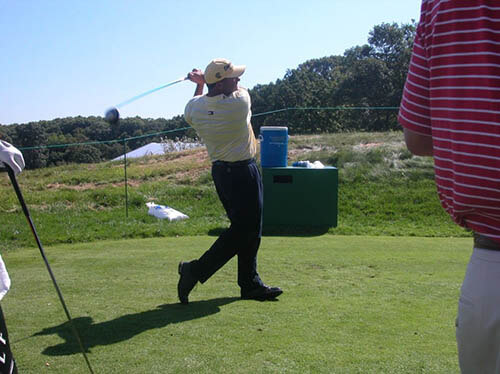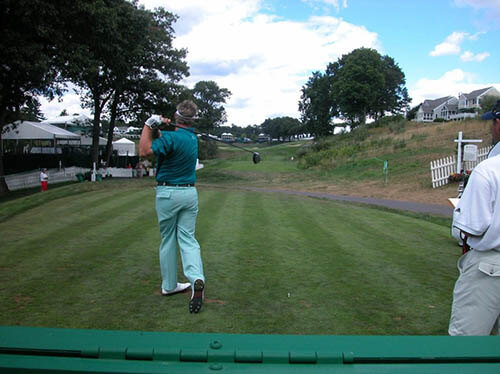Proper Golf Stance: “I” Finish is Easy on the Back

A Legacy Post by Keiser University College of Golf Senior Faculty and Director of Research Dr. T. J. Tomasi (1940-2023)
I work with a number of students with bad backs, either from injury or simply due to advancing age. So, when the golfer’s history arrives at ‘body profile,’ one of the first questions I ask is – “Tell me about your back.”
Lower Back Pain in Golf
A report presented to the American Academy of Orthopedic Surgeons documented that 50 percent of golfers were found to experience lower back pain while swinging the club — pain caused by a combination of rotation of the spine and the high velocity of that rotation.
Lower back pain is a common concern among golfers, and understanding its causes and implementing effective strategies can significantly improve both performance and well-being on the course. Back pain often stems from the repetitive nature of the golf swing and the rotational forces exerted on the spine. The lumbar spine undergoes significant stress during the golf swing, especially during the downswing and follow-through phases. Golf swings involve a complex combination of rotation, extension, and weight shift, and any deviation from the proper form can place undue stress on the lower back. Additionally, insufficient warm-up and flexibility exercises can contribute to muscle tightness and stiffness, exacerbating the risk of injury.
Seeking guidance from a fitness professional or physical therapist with expertise in golf-related issues can provide personalized advice and a tailored exercise routine. Additionally, paying attention to one’s body and taking breaks when needed, along with regular conditioning, can go a long way in promoting a healthier and pain-free golf experience.
How to Avoid Back Pain in Golf Swing
Basically, golf is not great for your back. But there is one swing modification that will help: End your swing in what I call the “I-finish,” i.e., standing straight up with no bend or curve in your lower back. The swing itself will be more around the body with the aim more to the right of target in anticipation of the draw ball flight. The key is to not tilt your spine much at the address. Your pelvis should be tucked up more under your hips vs. a normal, fanny-out setup. This encourages a flat shoulder turn and a full clubhead release that will draw the ball back to target. Look carefully at the two PGA Tour players pictured below and note two things about their swings: (1) the curve of the back and (2) the weight distribution at the finish.

Woody Austin, currently on the PGA Tour Champions, keeps his back straight because he’s not as flexible as some of the younger players, yet he still has a full swing arc. Note how his weight is on his front heel.

Darren Clarke’s has a bulky, less flexible body that encourages a much more vertical straight-back finish, with the force of his weight running more up and down. The weight is almost 100 percent on his front leg with no pressure left on the back big toe.
Both models can tap their back toe without repositioning their body – an indication of a full weight shift despite the upright back.
The Deadly Mismatch
Players who use the ‘I’ look over the ball as it leaves while those with curved backs look under the ball. Either is correct as long as there is a match. But your game will suffer if you have the deadly mismatch; i.e., never look over the ball if you are a curved-back player and never look under the ball if you are a straight-backed player.
Learn more!
Want more tips? If you want to take your game to the next level, contact our team at Keiser University’s College of Golf & Sport Management today. With our dedication and experience, we can elevate your game to new heights together. Give us a call today at 888-355-4465.












